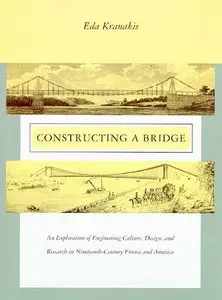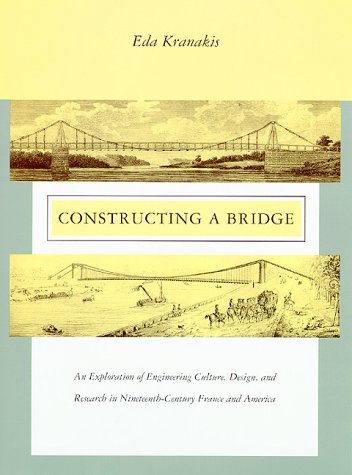Eda Kranakis "Constructing a Bridge:
An Exploration of Engineering Culture, Design, and Research in Nineteenth-Century France and America (Inside Technology)"
The MIT Press | 1996-11-01 | ISBN: 0262112175 | 448 pages | HTML | 1,7 MB
An Exploration of Engineering Culture, Design, and Research in Nineteenth-Century France and America (Inside Technology)"
The MIT Press | 1996-11-01 | ISBN: 0262112175 | 448 pages | HTML | 1,7 MB
If it is true, as Tocqueville suggested, that social and class systems shape technology, research, and knowledge, then the effects should be visible both at the individual level and at the level of technical institutions and local environments. That is the central issue addressed in Constructing a Bridge, a tale of two cultures that investigates how national traditions shape technological communities and their institutions and become embedded in everyday engineering practice.
Eda Kranakis first examines these issues in the work of two suspension bridge designers of the early nineteenth century: the American inventor James Finley and the French engineer Claude-Louis-Marie-Henri Navier. Finley – who was oriented toward the needs of rural, frontier communities – designed a bridge that could be easily reproduced and constructed by carpenters and blacksmiths. Navier – whose professional training and career reflected a tradition of monumental architecture and had linked him closely to the Parisian scientific community – designed an elegant, costly, and technically sophisticated structure to be built in an elite district of Paris. Charting the careers of these two technologists and tracing the stories of their bridges, Kranakis reveals how local environments can shape design goals, research practices, and design-to-construction processes.
Kranakis then offers a broader look at the technological communities and institutions of nineteenth-century France and America and at their ties to technological practice. She shows how conditions that led to Finley's and Navier's distinct designs also fostered different systems of technical education as well as distinct ideologies and traditions of engineering research.
The result of this two-tiered, comparative approach is a reorientation of a historiographic tradition initiated by Tocqueville (and explored more recently by Eugene Ferguson, John Kasson, and others) toward a finer-grained analysis of institutional and local environments as mediators between national traditions and individual styles of technological research and design.
Download FREE:



